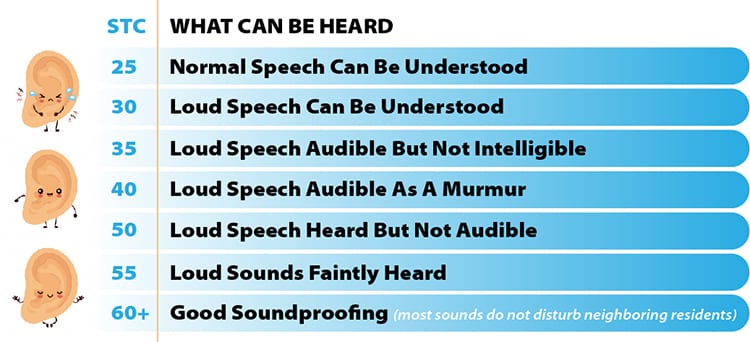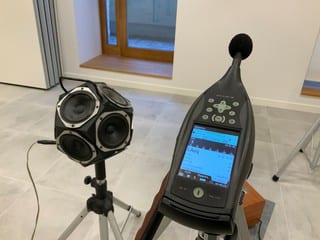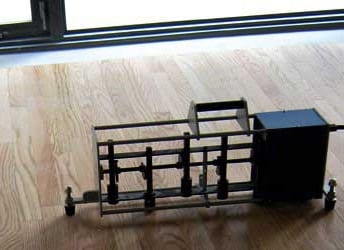Noise complaints between suites? What property managers should consider first

As acoustical consultants we get inquiries almost every day from property managers who are unsure how to best address residents who complain about noise from their neighbors. What is already the most common type of condo resident complaint has been further exacerbated by people now forced to work or stay isolated at home due to the COVID-19 pandemic. Among the most common type of noise complaints in residential buildings is noise from surrounding suites, either above, below, or adjacent on the same floor. This will be the focus of our blog post. An overview of what property managers and condo boards need to know about a broader range of building noise and vibration issues can be found by clicking here.
Airborne vs Structure-borne Sound
To begin, let’s quickly define two different terms: airborne sound and structure-borne sound. There are two ways that sound can transmit from a source (the neighbor) to a receiver (the resident who’s complaining): either through the air or through the structure. Sound traveling through air is how you hear the person talking to you from across the room; the most common sources of airborne sound transmission are human speech, music, and other mid-to-high frequency noises. Sound traveling through the structure is how you hear the person living above you moving their furniture at 3 am; the common sources of structure-borne sound transmission are footsteps, items dropped on the floor, and furniture being moved.
Sound Transmission Class (STC) Ratings Scale

Sound Transmission Class (STC) & Impact Insulation Class (IIC) Ratings
In North America, a demising assembly’s ability to insulate airborne and structure-borne noise between adjacent spaces is defined as the Sound Transmission Class (STC) rating and Impact Insulation Class (IIC) rating, respectively. For example, a higher STC rating of the suite-to-suite demising wall means that less airborne noise will travel through the wall to the neighbor versus a wall with a lower STC rating. Similarly, a lower IIC rating of the suite-to-suite floor/ceiling assembly means that more structure-borne noise will be audible in the suite below versus an assembly with a higher IIC rating. Note that STC and IIC ratings are not correlated with one another; it’s possible to have one high and the other low, but it’s also possible to have both high or both low.

Apparent Sound Transmission Class (ASTC) & Apparent Impact Insulation Class (AIIC) Ratings
It’s important to note that STC and IIC ratings apply to a specific suite-demising assembly, but not to the surrounding construction components. For example, a specific wall can have an STC rating of STC-60, as tested in a lab environment; however, when constructed in the field, the interface between the suite-to-suite demising wall and either the corridor wall or exterior wall may include a big hole, which all the sound is coming through. When testing the wall in the field, the result would be much lower than STC-60. To decipher between the theoretical acoustical performance of an assembly (STC and IIC) and the field acoustical performance of an assembly, an “A” (for Apparent) or “F” (for Field) is added before each acronym (ASTC/FSTC and AIIC/FIIC ratings).
National and International Building Code Minimum Criteria for Sound
The National Building Code (NBC) of Canada requires that a suite-to-suite demising assembly have a minimum rating of ASTC-47 (or STC-50, subject to some caveats). There are no requirements for IIC ratings in the NBC; however, an impact performance of IIC-55 rating is recommended. The International Building Code (IBC), which is used or has been adopted by all 50 US states, requires that dwelling units be separated by a minimum STC-50 and IIC-50 assembly (ASTC-45 and AIIC-45 when tested in the field). Sometimes, the condo documents will include a minimum IIC rating – this can also be referenced as criteria. For a luxury condo building, higher standards could be applied (e.g., merely meeting minimum building code requirements would not be sufficient).

Searching for Clues: Noise investigation Detective Work
The first question we always ask property managers is what kind of noise the residents are complaining about – we’re looking for clues to identify if the complaint is regarding airborne or structure-borne noise transmission. We’re trying to decipher keywords such as “footsteps” or “furniture” (typically structure-borne noise issue) or “shouting” or “music” (typically airborne noise issue). The type of complaint will lead to the type of testing recommended (ASTC testing vs. AIIC testing) to verify the as-built performance of the building construction. As noted above, even when a suite-demising assembly is properly designed, construction deficiencies can lead to paths for sound to transmit between suites around (or through) the demising wall, which would be reflected in an ASTC or AIIC test. Sometimes a resident is complaining about both types of noise, in which both types of testing would be recommended.
It is important to note that while both ASTC and AIIC are requirements under the International Building Code, only airborne noise insulation (ASTC) is a requirement under the National Building Code; minimum structure-borne noise insulation (AIIC) performance is a recommendation, which is not legally binding (unless included in the condo documents). Ensuring the suite-demising wall meets the ASTC requirements in the National Building Code is often the first priority of property management. As noted above, even in the case of very loud footstep noise (i.e., very low AIIC rating), the tested ASTC rating may be high and exceed building code requirements. Sometimes, this is a sufficient conclusion to the noise complaint. Where the complaint is based on structure-borne noise, an AIIC test can be conducted for comparison to requirements in the condo documentation (if applicable) or NBC recommendations. In the United States, both ASTC and AIIC testing would be required in response to a noise complaint in order to satisfy the requirements of the International Building Code.
Expectations of Absolute Silence vs Building Code Minimum Criteria for Sound Transmission
Unfortunately for residents, the ability to hear neighboring sounds within your suite does not automatically equal excessive noise from a building code perspective. This concept can be frustrating for many residents, especially those moving out of quiet detached homes into a residential multi-family building with adjoining neighbors on all sides. Building code requirements and recommendations are not sufficient to expect suite-to-suite inaudibility; even with an STC-50 separation, loud sounds will still be faintly audible. This can also be more noticeable when background sound levels in the vicinity of a suite are otherwise low. To more noise-sensitive residents, their expectations of absolute silence in condos may not match the reality, despite the fact that their suite-demising assemblies actually meet building code requirements.

When Canadian Condo Documents do not include any Minimum AIIC (or IIC) ratings
Note that in the event that the condo documents do not include any minimum AIIC (or IIC) ratings in Canada, there are subjective minimum standards that would be considered acceptable in building construction, based on resources such as the NBC, international codes and guidelines, and experience. A resident could seek litigation to resolve a structure-borne complaint that has not been addressed by property management.
When Acoustical Testing Does Reveal a Noise Transmission Deficiency
To summarize, when a resident is complaining about hearing their neighbor, they could be complaining about either airborne sound transmission or structure-borne sound transmission. Depending on which type of complaint, the suite-to-suite assembly (wall or floor/ceiling) can be tested in the field to quantify the acoustical performance, which can be compared to building code requirements or other standards.
In the event of a failed test result (or generally low result), in limited scenarios the mode of deficiency can be estimated based on the test results and wall type. In most scenarios, construction deficiencies can only be distinguished by opening up the wall to investigate what specifically was built, in comparison to the design drawings. Common construction deficiencies leading to failed ASTC tests include poor caulking, incorrectly installed resilient channels, or large gaps between the drywall panels and floor/ceiling. Depending on the construction deficiency, improvements can be made in different ways to increase the performance of the wall, although this can often be costly and intrusive to residents on both sides of the assembly. An experienced and knowledgeable acoustical consultant can further investigate the construction deficiency and propose possible mitigation options.
